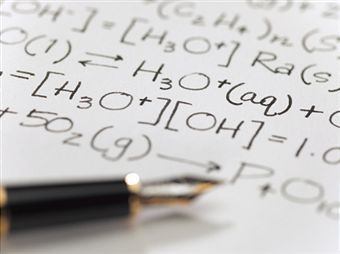The aim of this research theme is to develop methodological tools for model identification and parameter estimation from concentration, calorimetric and spectroscopic data.
Model Identification of Fluid-Fluid Reaction Systems
 This project initiated in 2012 is concerned with the extension to fluid-fluid reaction systems of the extent-based incremental identification. The project includes the following milestones: (i) investigation of F-F systems with reaction and accumulation in the film and reactions in both bulk phases; (ii) determination of the minimum number of measured species needed for reconstructing the various extents; (iii) identification of reaction and mass-transfer laws and corresponding parameters using computed extents for a selection of case studies of industrial relevance. [More]
This project initiated in 2012 is concerned with the extension to fluid-fluid reaction systems of the extent-based incremental identification. The project includes the following milestones: (i) investigation of F-F systems with reaction and accumulation in the film and reactions in both bulk phases; (ii) determination of the minimum number of measured species needed for reconstructing the various extents; (iii) identification of reaction and mass-transfer laws and corresponding parameters using computed extents for a selection of case studies of industrial relevance. [More]
Model Identification of Homogeneous and Gas-Liquid Reaction Systems
 This research project directed in 2005-2011 proposed linear transformations for open homogeneous and gas-liquid reactions systems. The idea is to express the numbers of moles in terms of extents of reactions, extents of mass transfer (for gas-liquid reaction systems only), extents of inlet, extents of outlet and invariants. These transformations use only information regarding the stoichiometry, the inlet composition, the initial conditions, and the knowledge of the species transferring between phases. Alternatively, it was proposed to rearrange the number of moles in Reaction Variant (RV) form or Reaction and Mass-transfer Variant (RMV) form and to compute the extents from these forms. From the corresponding extents, the rates of reaction and rates of mass transfer could be identified incrementally, that is individually, for each reaction and each mass transfer. The minimum number of measurements needed to reconstruct the unavailable species was also investigated. [More]
This research project directed in 2005-2011 proposed linear transformations for open homogeneous and gas-liquid reactions systems. The idea is to express the numbers of moles in terms of extents of reactions, extents of mass transfer (for gas-liquid reaction systems only), extents of inlet, extents of outlet and invariants. These transformations use only information regarding the stoichiometry, the inlet composition, the initial conditions, and the knowledge of the species transferring between phases. Alternatively, it was proposed to rearrange the number of moles in Reaction Variant (RV) form or Reaction and Mass-transfer Variant (RMV) form and to compute the extents from these forms. From the corresponding extents, the rates of reaction and rates of mass transfer could be identified incrementally, that is individually, for each reaction and each mass transfer. The minimum number of measurements needed to reconstruct the unavailable species was also investigated. [More]
Reaction and Flow Variants/Invariants
 For the analysis of first-principles models of reaction systems, it is important to distinguish between states that depend on the reactions and those that do not. In this research project conducted in 1993-1998, the concept of reaction invariants was extended to include the flow invariants of reaction systems with inlet and outlet streams. A nonlinear transformation of the dynamic model to normal form was proposed in order to separate the number of moles vector into variants and invariants. This resulted in expressions for the factorization of concentration data. [More]
For the analysis of first-principles models of reaction systems, it is important to distinguish between states that depend on the reactions and those that do not. In this research project conducted in 1993-1998, the concept of reaction invariants was extended to include the flow invariants of reaction systems with inlet and outlet streams. A nonlinear transformation of the dynamic model to normal form was proposed in order to separate the number of moles vector into variants and invariants. This resulted in expressions for the factorization of concentration data. [More]
Identification of Stoichiometric Models
 A methodology based on a Target Factor Analysis (TFA) was developed in 1990 for identifying stoichiometric models of complex reaction systems. Without any knowledge of reaction kinetics, this methodology allows deriving the number of independent reactions and determining the corresponding stoichiometric model. It is possible to incorporate known stoichiometric information in the methodology, thereby reducing considerably the effect of measurement noise. In 1999, the project was completed by the construction of a data matrix that is well suited to existing TFA techniques and that was built from concentration measurements, material exchange terms, and initial conditions. [More]
A methodology based on a Target Factor Analysis (TFA) was developed in 1990 for identifying stoichiometric models of complex reaction systems. Without any knowledge of reaction kinetics, this methodology allows deriving the number of independent reactions and determining the corresponding stoichiometric model. It is possible to incorporate known stoichiometric information in the methodology, thereby reducing considerably the effect of measurement noise. In 1999, the project was completed by the construction of a data matrix that is well suited to existing TFA techniques and that was built from concentration measurements, material exchange terms, and initial conditions. [More]